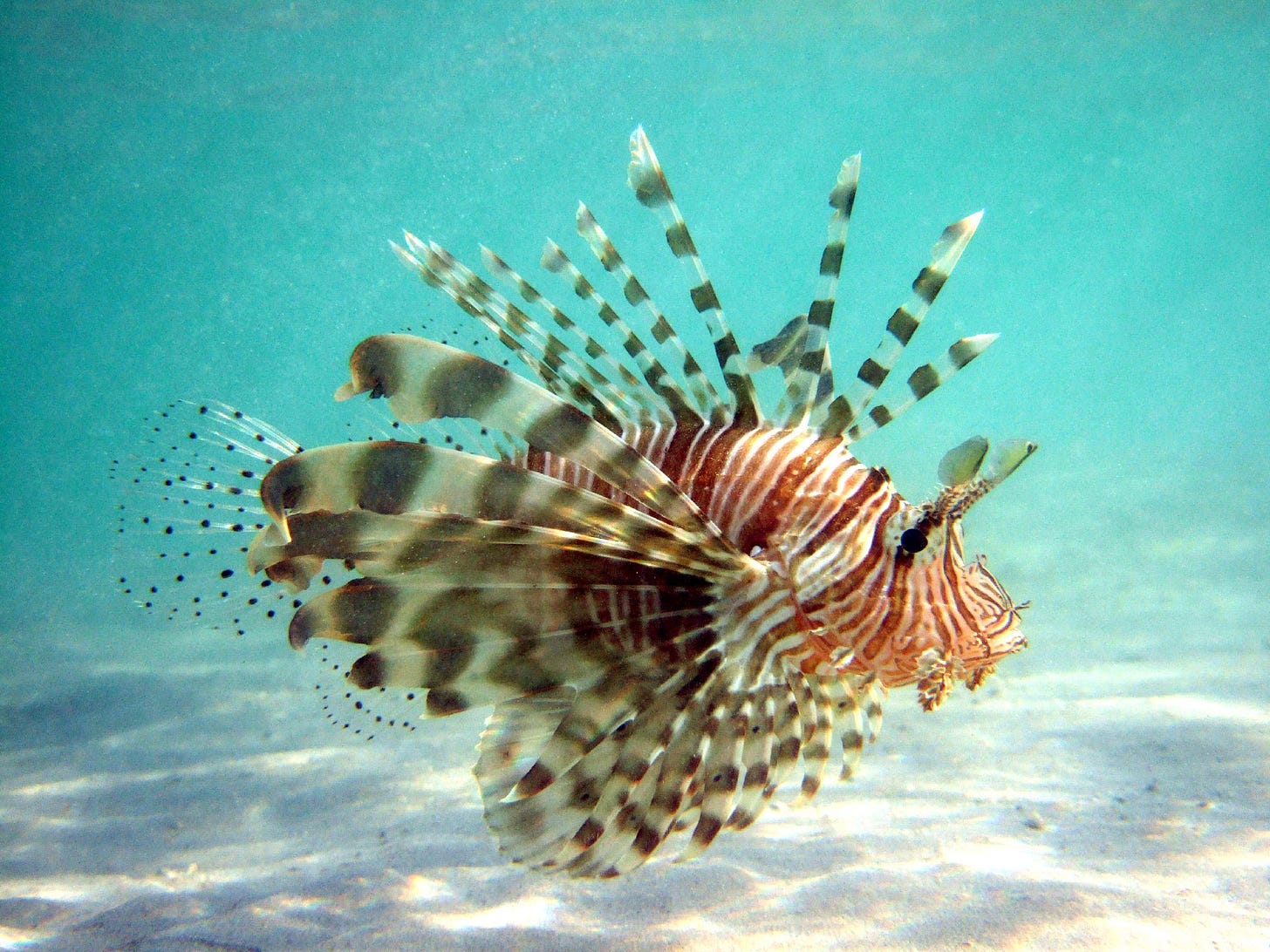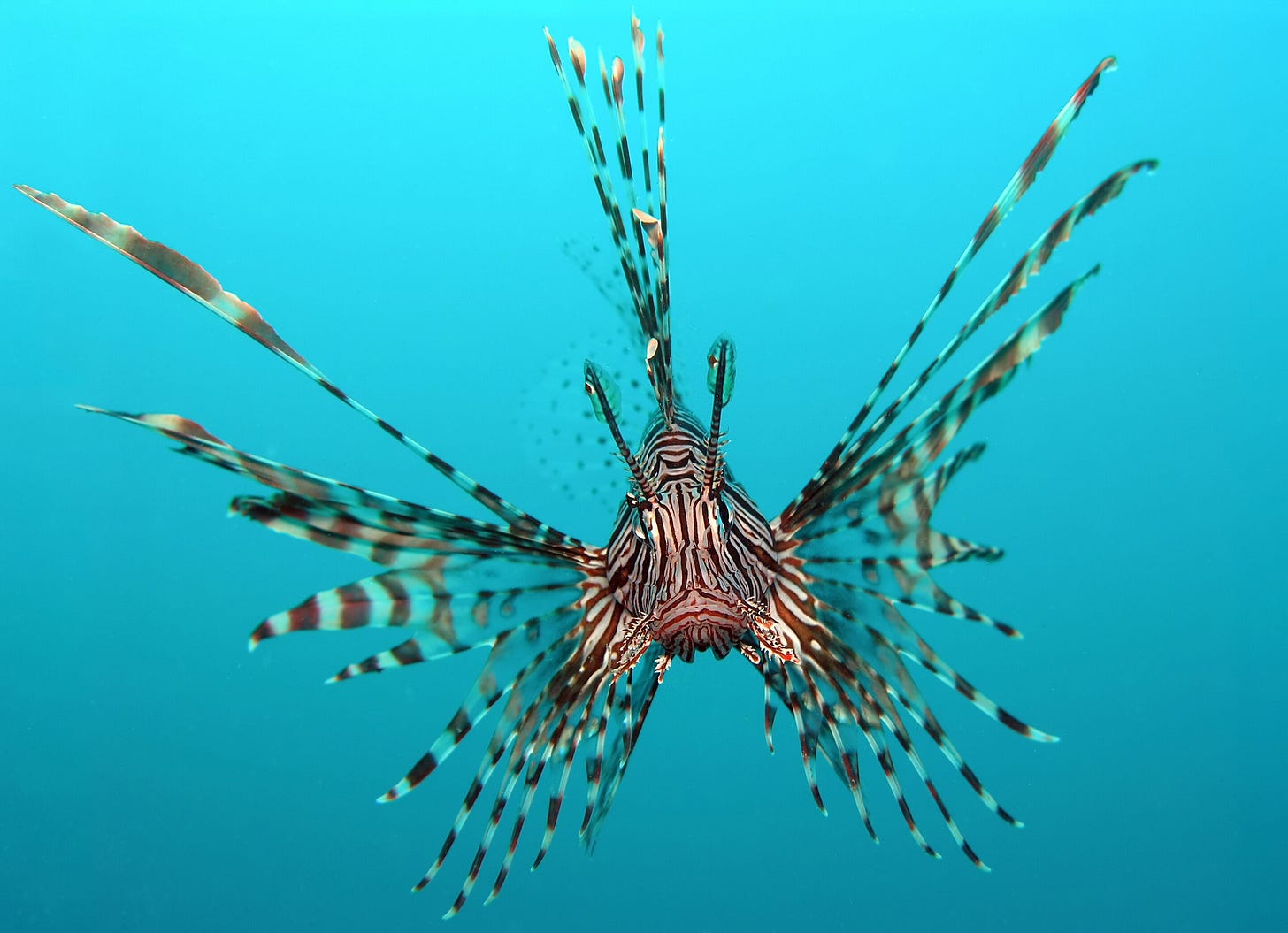Fatal beauty
Lionfish, venom, and beauty as defense in nature
“In the natural world, beautiful usually means deadly. Beautiful plus a casual demeanor always means deadly.”
-E.O. Wilson, Naturalist.
Beauty in nature can be a deadly warning. Attitude is important here. Some beautiful animals, such as the male peacock, are skittish and will run/fly away from threats. The animals you really need to watch out for are those that are beautiful and nonchalant. Bright colors and a carefree attitude, even in the presence of a potential predator, means DANGER. Take the red lionfish Pterois volitans, which is a stunningly beautiful animal with elongate, feather-like fins and dazzling red and black coloration. Lionfish are nonchalant in the water, swimming slowly in the open and unafraid of people. The colorful, frilly appearance, so pleasing to the eye, is nature’s equivalent of a flashing red sign. The lionfish wants you to see it, so you know to stay away. The delicate, feathery extensions of the fins are actually sharp, needle-like spines. The majority of the spines are natural hypodermic needles, capable of injecting an extremely painful venomous sting if you touch or God-forbid try to swallow one. The beautiful colors tell would-be predators to stay away, or face the consequences.
Figure (above): The red lionfish (Pterois volitans) includes most invasive lionfish in the Atlantic and Caribbean. Note the red stripes and the elongate, feather-like spines. Photo by Jean-Marc Kuffer, sourced from Wikipedia Commons.
Lionfish are a fascinating experiment in defense. Predatory fishes have two primary limitations in what they can eat. First, most fishes are visual predators and therefore need to see their prey to eat it. Second, fish are limited in what they can eat by the size of their mouthes. Piscivorous fishes typically swallow prey whole, evolving adaptations to the jaws and skull to accommodate larger prey items. Some, like the gulper eel, have evolved to the point that they can swallow prey items many times larger than themselves! To avoid predation, fishes will often evolve deceptive coloration or structures to camouflage themselves, blending into the background or even looking like inanimate objects. If spotted, fishes can still survive by being too large to swallow. Many fishes have sharp, bony spines on their fins, which makes them more difficult to swallow. A variety of fish can even erect the fin spins to lodge themselves in the mouth or throat of a predator. The most extreme example are pufferfishes, which can inflate themselves into a spiky, inedible ball to avoid being eaten. Lionfish and their relatives take things a step further. The scorpaeniformes (which includes lionfish, scorpionfishes, stonefish, and a variety of others) have evolved venomous spines for self defense, making themselves dangerous to potential predators. Lionfish are not shy, they have even been reported to swim at divers spines first! Natural selection has favored the bright, the bold, and the deadly in lionfish. To understand how, we need to take a broader look at venom as a means of defense.
Figure (above): Lionfish with spines extended in anterior view. Note how the spines make the animal much larger and harder to swallow/attack, and the colors make it very easy to spot. Photo by Jens Petersen, sourced from Wikipedia. No changes made, License.
Keep reading with a 7-day free trial
Subscribe to Fish History to keep reading this post and get 7 days of free access to the full post archives.



